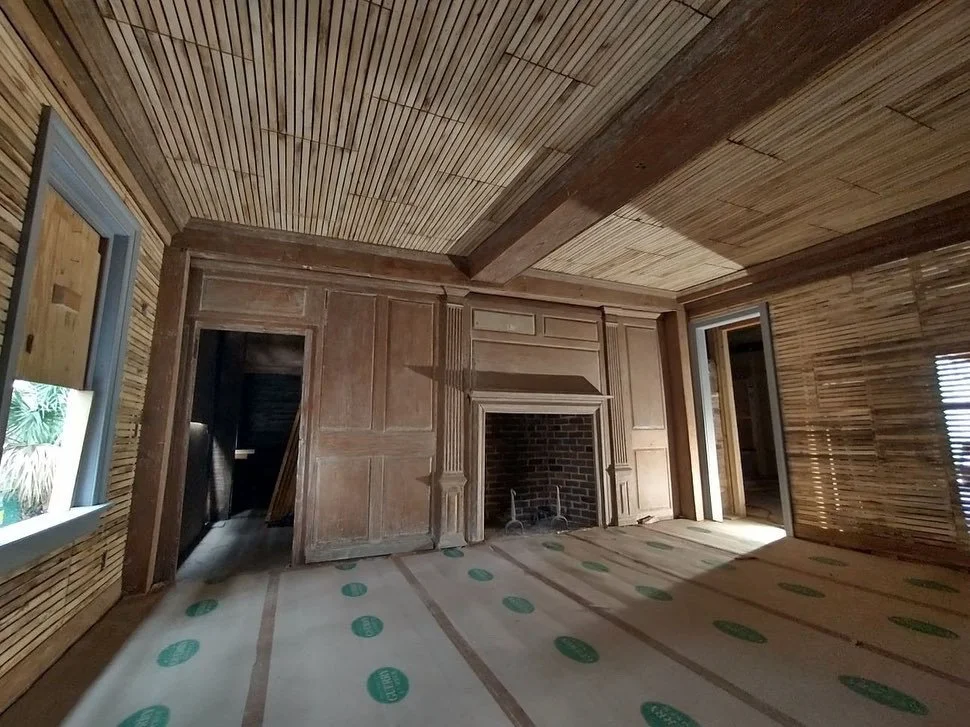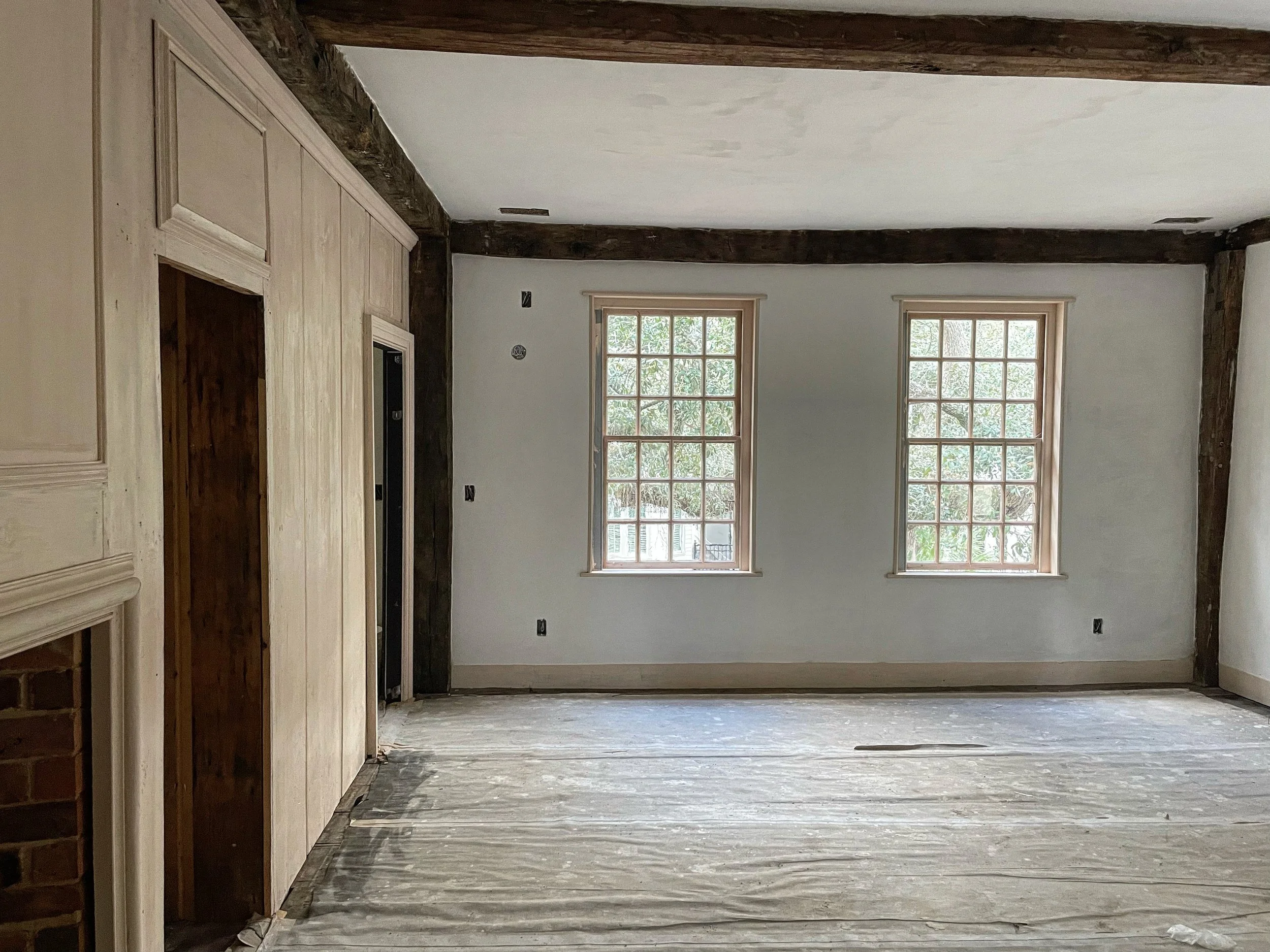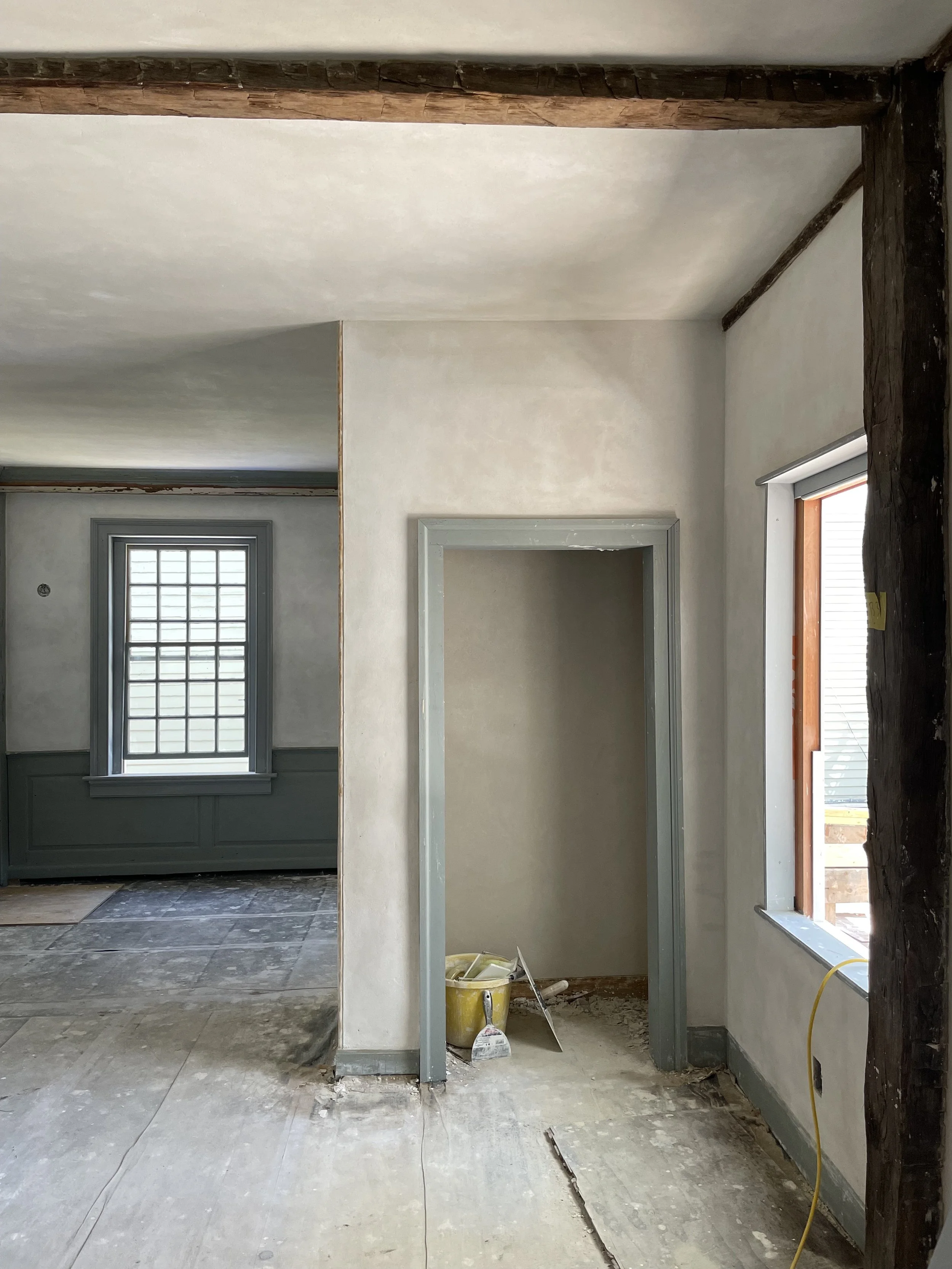The benefits of Lime Plaster on your Historic Property.
The allure of historic homes lies not just in their aesthetic charm, but also in the stories they tell. Each architectural detail, each material used, speaks volumes about the era they hail from.
One such material, often overlooked, is lime plaster. A traditional building material, lime plaster has been used for thousands of years, from ancient Roman structures to colonial-era homes.
But why should we care about lime plaster today? The answer lies in its remarkable benefits. Lime plaster is not just a relic of the past, but a healthy building material that offers unique advantages in the restoration of historic homes.
Breathable, antibacterial, and flexible, lime plaster contributes to a healthier indoor environment while maintaining the authenticity of the structure. It's a testament to the wisdom of our ancestors, who understood the value of using what nature provided.
In this article, we delve into the benefits of lime plaster, exploring its role in historic preservation and its relevance in today's world. We invite you to journey with us, as we uncover the stories lime plaster has to tell, and the reasons why it deserves a place in your historic home.
Join us as we celebrate the past, while building a healthier, more sustainable future.
Hills-Galloway House plaster work @ Printmaker’s Inn
The Historical Significance of Lime Plaster
Lime plaster's roots trace back millennia, with its use evident in many ancient civilizations. Roman architects and builders prized it for its durability and aesthetic appeal. Over time, lime plaster became a staple across diverse architectural styles, from grand cathedrals to humble cottages.
Its continued use through the ages underscores its indispensable role in building heritage. Lime plaster not only reflects historical building practices but also maintains cultural narratives. As we explore these structures today, lime plaster offers a tactile link to history, preserving the craftsmanship and techniques of bygone eras.
Composition and Properties of Lime Plaster
Lime plaster is a traditional building material crafted from simple, natural ingredients. It is made by mixing lime, sourced from limestone, with sand and water. This composition creates a versatile and sustainable plaster with unique properties.
One of its defining features is its compatibility with other materials. Lime plaster can bond with surfaces like stone and wood, enhancing structural cohesion. Its natural ingredients not only ensure durability but also contribute to the healthiness of the indoor environment. When applied correctly, lime plaster offers both stability and aesthetic appeal to historic structures.
Lime Plaster Scratch Coat on Sawn Lath
Breathability and Moisture Regulation
A standout feature of lime plaster is its breathability. It allows water vapor to pass through, reducing moisture buildup. This prevents damp issues and mold growth inside homes.
This breathability also helps regulate humidity levels. By maintaining a balanced indoor climate, lime plaster contributes to a more comfortable living environment. Its ability to breathe makes lime plaster an invaluable material for preserving historic structures while ensuring modern-day comfort.
Antibacterial and Antifungal Qualities
Lime plaster offers natural protection against bacteria and fungi. Its high pH level creates an inhospitable environment for microbial growth. This antibacterial property enhances indoor air quality.
Additionally, lime plaster's antifungal qualities prevent mold formation. It acts as a natural shield, protecting surfaces from infestations. This makes lime plaster an ideal choice for those seeking a healthier living space while maintaining historical integrity.
Flexibility and Durability
Lime plaster is remarkably flexible, accommodating slight building movements. This flexibility reduces the risk of cracks, a common issue in older structures. Its elasticity allows it to adapt without compromising the surface.
Moreover, lime plaster boasts impressive durability. It withstands the test of time, with many lime-plastered buildings standing for centuries. This longevity ensures that lime plaster remains an invaluable asset in the restoration and maintenance of historic homes.
Eco-Friendly and Sustainable Practices
Lime plaster stands out as an eco-friendly option due to its natural and abundant components. Made primarily from limestone, sand, and water, it minimizes the need for synthetic materials. This results in lower environmental impact during manufacturing. For example latex paints, drywall, plasterboards all use some various modern synthetic products that trap moisture and result in mold issues.
Its sustainability extends beyond production. Lime plaster can be locally sourced, reducing transport emissions. Its longevity and ability to be repaired also lessen waste. Choosing lime plaster aligns with green building practices, fostering environmental responsibility and contributing to a sustainable future. When using lime wash with lime plaster it can self heal, meaning if cracks happen, you can simply re lime wash those areas and it will heal or close up the crack after layers of lime wash are applied. With Drywall for example if an issue arises you need to cut out the drywall and replace it with new sections of said product.
The Role of Lime Plaster in Historic Preservation
Lime plaster plays a crucial role in maintaining the authenticity of historic buildings. Its compatibility with traditional materials ensures that restorations respect the original architecture. This alignment preserves the cultural significance embedded in our historic structures.
Moreover, using lime plaster in preservation projects is often a requirement for listed buildings. Its natural flexibility accommodates structural movements, preventing cracks that other materials might not withstand. By faithfully restoring historic edifices, lime plaster safeguards our architectural heritage for future generations to appreciate. One issue that we face especially in the USA, is that there are very little interior easements in place on our historic structures. This then prevents any outside historic body from enforcing historic preservation standards that are necessary for the survival of important interior aspects of these buildings. As Preservation consultants that is one of our main objectives with clients, to make sure they understand not only the benefits of historic lime plaster, but also the necessity in keeping it in tact for a historic reason. While ripping out original plaster for drywall may be the easier and cheaper solution during a project it certainly is not the best option long term for any historic structure for reasons explained above.
Aesthetic Benefits and Versatility
Lime plaster offers an unmatched aesthetic appeal with its unique texture and depth. Its natural finish can range from smooth to a rustic patina, allowing for diverse visual expressions. Each application is distinct, offering an individual character to every wall surface. For example early structures often had only “one coat” or “two coat” work given the expense of plaster work in the 17th or early 18th century in America. However, the finer homes dating back to the 18th century typically had smoother “three coat” work for example in places like Mt Vernon (George Washington’s home).
Beyond its intrinsic beauty, lime plaster integrates seamlessly with traditional materials like wood and stone. This makes it ideal for restoring historic homes. The material's adaptability ensures that restorations honor the building's original charm, contributing to an authentic and cohesive visual experience. For example in our recent reassembly of the circa 1693 Hills Galloway house in Savannah, we benefited greatly by using traditional Lath and Lime Plaster due to the irregularities in the 300 plus year old timber frame house. It not only has helped us with humidity control, heating and cooling, but has also taken the very shape of the building which maintained the incredible 332 year old weaves and wobbles to the building.
Lime Wash: The Protective Decorative Finish
Lime wash serves as both an aesthetic and functional complement to lime plaster. This traditional finish adds a soft, matte look that enhances architectural details with subtle coloration. The natural pigments used in lime wash can create gentle shades that evolve over time, deepening its charm. Lime wash is simply Lime Putty mixed with Water and applied in typically several coats. You can use only a handful of products to finish on top of lime plaster. Certain Casein based paints are ok to use on Lime Plaster, but the use of latex paints are horrible to use because that will offset all the great properties like breathability lime plaster possesses. Lime washes can be have pigment added to them to add color when desired. Mineral and Clay based paints can be advertised for use on lime plaster, but we do not recommend them as they can set too hard for the lime plaster. Note* Linseed Paints are our go to product for any wood surfaces to ensure they are able to breath accordingly. They can be used over lime washed areas for higher traffic areas or on walls that need washing/wiping. More on them in a future post!
Our great friends over at Brouns and Co can help source Casein Paints and Lime Washes.
Aside from its decorative value, lime wash offers protective benefits. It shields surfaces from weathering and strengthens the plaster beneath. This dual role makes lime wash a preferred choice for exterior and interior applications, ensuring that beauty and preservation go hand in hand.
Practical Considerations for Restoration
When restoring historic homes, choosing the right materials is crucial. Lime plaster is a top choice due to its many benefits. Its breathability and compatibility with older structures help prevent damage over time.
Moreover, working with skilled artisans familiar with lime plaster ensures high-quality results. Their expertise is key in maintaining the original craftsmanship and character of historic buildings. This attention to detail is essential for successful preservation. It also helps promotes the use of tradespeople, which are vital to the preservation of our heritage buildings. Don’t hesitate to reach out to us for guidance in this!
Sourcing and Working with Lime Plaster
Sourcing quality lime plaster can sometimes be challenging, but local suppliers often provide authentic materials. These sources reduce transportation emissions, aligning with eco-friendly practices. Additionally, local materials resonate with the original construction methods of historic properties.
Working with lime plaster requires specialized skills to ensure longevity and performance. This process involves meticulous preparation and application, often carried out by craftspeople who understand this traditional art form. Their hands-on experience makes a world of difference, ensuring the plaster’s seamless integration. Make sure when using a plasterer, they are trained in using Lime Plaster and not just products like gypsum or structolite.
Conclusion: Embracing Tradition for a Sustainable Future
Lime plaster offers a bridge between history and sustainability. Its use in historic restoration honors the past while embracing the green building practices of today. Preserving the integrity of historic homes with lime plaster not only enhances beauty but also ensures longevity.
This timeless material supports healthier living environments and fosters a deep connection to cultural heritage. As more projects choose lime plaster, the journey of embracing tradition becomes a commitment to safeguarding architectural beauty. By investing in such practices, we pave the way for future generations to appreciate these storied structures. Please contact us with any questions about your historic structure!
Henry Orton performing finish coat on the Hills Galloway House



